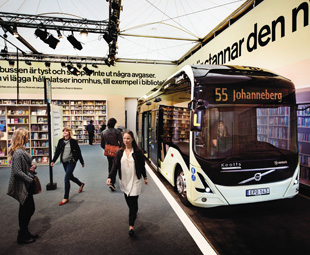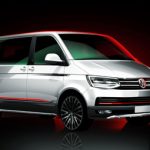Are Electric Buses Taking Over?

FRANK BEETON re-emphasises the growing move to electric bus manufacturing
Regular readers of this column will be all too aware of the increasing frequency of “electric bus” stories that have appeared recently. By 2012, we had become fully used to reading and writing about various forms of series and parallel hybrid drivelines, alternative fuels (gas and hydrogen), and even flywheel-driven vehicles. However, towards the end of that year, we reported that Polish manufacturer Solaris Bus & Coach was “pushing the electric bus envelope”.
We added that it was probably fair to say that the renewed interest in electric-powered public transport was initially prompted by the necessity to develop new technology to support hybrid drivelines. Once the traditional mould of a fossil-fuelled engine driving a live axle through a mechanical transmission had been broken, manufacturers seemed to have become more receptive to the development of increasingly radical traction solutions.
We stand by those comments, and the plethora of stories relating to all-electric traction that currently flood the specialist media cannot be ignored. Here are some recent highlights:
• Ebusco – the Dutch electric-drive and electric-bus builder – is evaluating the option of taking on a 20 000 m² site in Helmond to assemble electric drivelines and buses. Currently, Ebusco’s buses are built in China under contract using a substantial number of European components.
With current business including the support of two, two-door, low-floor 12-m fully electric buses with 250 kW motive power operating in Stavanger, Norway, an order to build six buses for Bonn, Germany, and a number of outstanding tenders, the company perceives that there will be benefits in moving to local production.
• Power Vehicles Innovation of Gretz-Armainvillers, France, has secured an order for eleven Gepebus Oreos 4X fully electric buses from the Paris transportation authority, RAPT.
• Chinese manufacturer BYD, which claims to be the world’s largest electric bus builder, has delivered 35, 12-m electric buses for operation at Amsterdam’s Schiphol Airport. These units have two battery packs instead of the usual three, resulting in reduced mass and increased passenger capacity.
• At the 2015 China Beijing International Exhibition on Buses, Trucks & Components staged in May, all-electric buses were displayed inter alia by:
• Xiamen King Long (fully integral 12-m, 57-passenger city bus, powered by
100 kW motor and rated at 18 t gross vehicle mass (GVM));
• Higer Bus Company (seven-metre, 44-passenger medium-duty city bus, powered by 100 kW motor);
• Jiangsu Alfa Bus Company (eight- and ten-metre city buses, 66 and 89 passenger, rated at 12 and 16,5 t GVM, power units up to 250 kW);
• Chengdu Bus Company (11,5-m, 85-passenger monocoque city bus, powered by 65 kW motor);
• Dongfeng Yangzijiang Automobile (8,2-m and 12-m city buses with separate body/chassis design, rated at 12,5 and 18 t GVM, powered by 65 and 96 kW motors);
• Nanjing King Long (53-passenger, 12-m, fully-integral city bus, rated at 17,5 t GVM, powered by 94 kW motor);
• Jinhua Youngman Automobile (92-passenger monocoque city bus, rated at 18 t GVM, powered by 270 kW motor);
• Yangzhou Asiastar Bus Company (11-m, 53-passenger monocoque city bus, rated at 18 t GVM, powered by 200 kW motor), and;
• Zhongtong Bus Holding Company (12-m, 107-passenger city bus rated at 18 t GVM, with 150 kW motor).
Interestingly, none of these companies would have been considered a “mainstream” bus manufacturer as recently as one decade ago. The swing to all-electric buses appears to have been mainly exploited by a number of new entrant manufacturers, and has been particularly well supported in China, presumably because of that country’s urban pollution issues.
However, Volvo Buses announced its 10,7-m, 155 kW, 86-passenger Electric Concept Bus at the UITP exhibition in Milan, Italy, during June, and appears fully committed to participating in this market.
The outstanding features of this vehicle include its two-speed automated transmission, and front-central driving position. This model started regular traffic testing in Gothenburg on June 15, and production is due to commence in 2017.
Published by
Focus on Transport
focusmagsa




